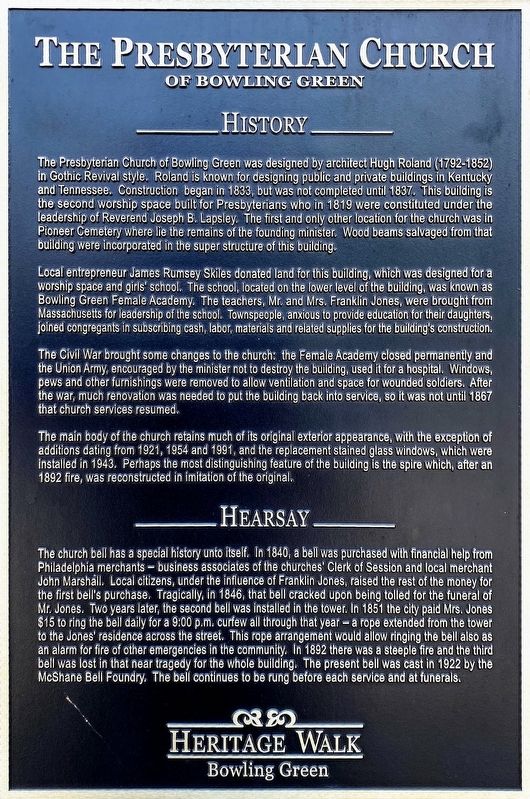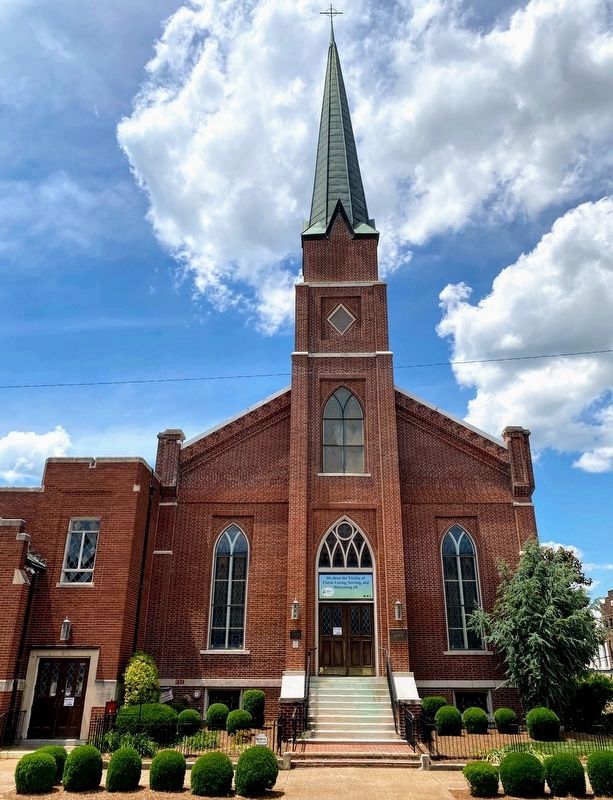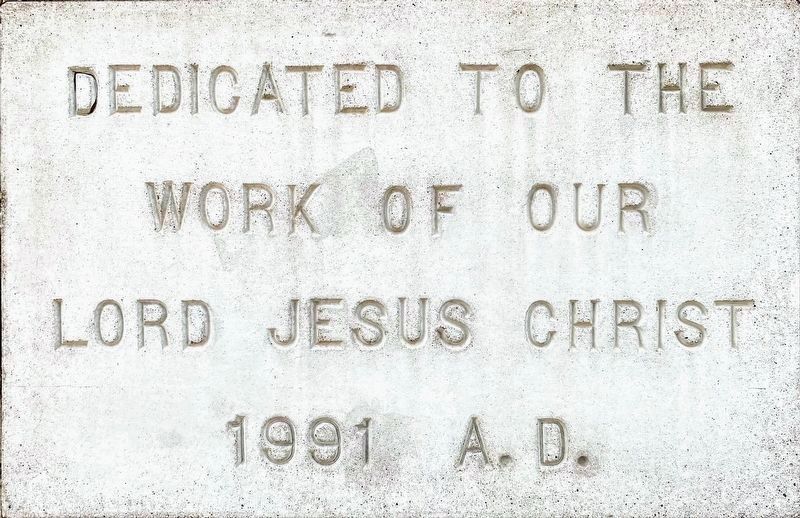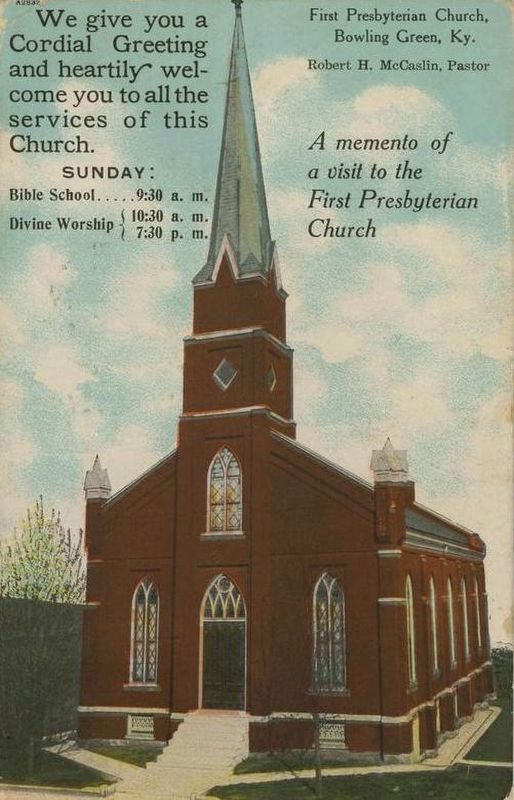Bowling Green in Warren County, Kentucky — The American South (East South Central)
The Presbyterian Church
of Bowling Green
History
The Presbyterian Church of Bowling Green was designed by architect Hugh Roland (1792-1852) in Gothic Revival style. Roland is known for designing public and private buildings in Kentucky and Tennessee. Construction began in 1833, but was not completed until 1837. This building is the second worship space built for Presbyterians who in 1819 were constituted under the leadership of Reverend Joseph B. Lapsley. The first and only other location for the church was in Pioneer Cemetery where lie the remains of the founding minister. Wood beams salvaged from that building were incorporated in the super structure of this building.
Local entrepreneur James Rumsey Skiles donated land for this building, which was designed for a worship space and girls' school. The school, located on the lower level of the building, was known as Bowling Green Female Academy. The teachers, Mr. and Mrs. Franklin Jones, were brought from Massachusetts for leadership of the school. Townspeople, anxious to provide education for their daughters, joined congregants in subscribing cash, labor, materials and related supplies for the building's construction.
The Civil War brought some changes to the church: the Female Academy closed permanently and the Union Army, encouraged by the minister not to destroy the building, used it for a hospital. Windows, pews and other furnishings were removed to allow ventilation and space for wounded soldiers. After the war, much renovation was needed to put the building back into service, so it was not until 1867 that church services resumed.
The main body of the church retains much of its original exterior apperance, with the exception of additions dating from 1921, 1954 and 1991, and the replacement stained glass windows, which were installed in 1943. Perhaps the most distinguishing feature of the building is the spire which, after an 1892 fire, was reconstructed in imitation of the original.
Hearsay
The church bell has a special history unto itself. In 1840, a bell was purchased with financial help from Philadelphia merchants - business associates of the churches' Clerk of Session and local merchant John Marshall. Local citizens, under the influence of Franklin Jones, raised the rest of the money for the first bell's purchase. Tragically, in 1846, that bell cracked upon being tolled for the funeral of Mr. Jones. Two years later, the second bell was installed in the tower. In 1851 the city paid Mrs. Jones $15 to ring the bell daily for a 9:00 p.m. curfew all through that year - a rope extended from the tower to the Jones' residence across the street. This rope arrangement would allow ringing the bell also as an alarm for fire or other emergencies in the community. In 1892 there was a steeple fire and the third bell was lost in that near tragedy for the whole building. The present bell was cast in 1922 by the McShane Bell Foundry. The bell continues to be rung before each service and at funerals.
Erected by Bowling Green Heritage Walk.
Topics. This historical marker is listed in these topic lists: Architecture • Churches & Religion • Communications • Notable Buildings. A significant historical year for this entry is 1833.
Location. 36° 59.539′ N, 86° 26.536′ W. Marker is in Bowling Green, Kentucky, in Warren County. Marker is on East 10th Avenue just west of State Street, on the right when traveling east. Marker is at the side entrance for the Bowling Green Presbyterian Church. Touch for map. Marker is at or near this postal address: 1003 State St, Bowling Green KY 42101, United States of America. Touch for directions.
Other nearby markers. At least 8 other markers are within walking distance of this marker. Long Hunters (within shouting distance of this marker); James T. Morehead, (1797-1854) (within shouting distance of this marker); Warren County Courthouse (within shouting distance of this marker); Warren County's Chief USA Civil War Officers / Warren County's Awards (within shouting distance of this marker); Warren County / Portage Railroad (within shouting
distance of this marker); Bowling Green (within shouting distance of this marker); Veterans of the American Revolution (within shouting distance of this marker); Spanish - America War Memorial (within shouting distance of this marker). Touch for a list and map of all markers in Bowling Green.
Credits. This page was last revised on June 18, 2021. It was originally submitted on June 10, 2021, by Shane Oliver of Richmond, Virginia. This page has been viewed 171 times since then and 19 times this year. Last updated on June 12, 2021, by Bradley Owen of Morgantown, West Virginia. Photos: 1, 2, 3. submitted on June 10, 2021, by Shane Oliver of Richmond, Virginia. 4. submitted on June 18, 2021. • Devry Becker Jones was the editor who published this page.



